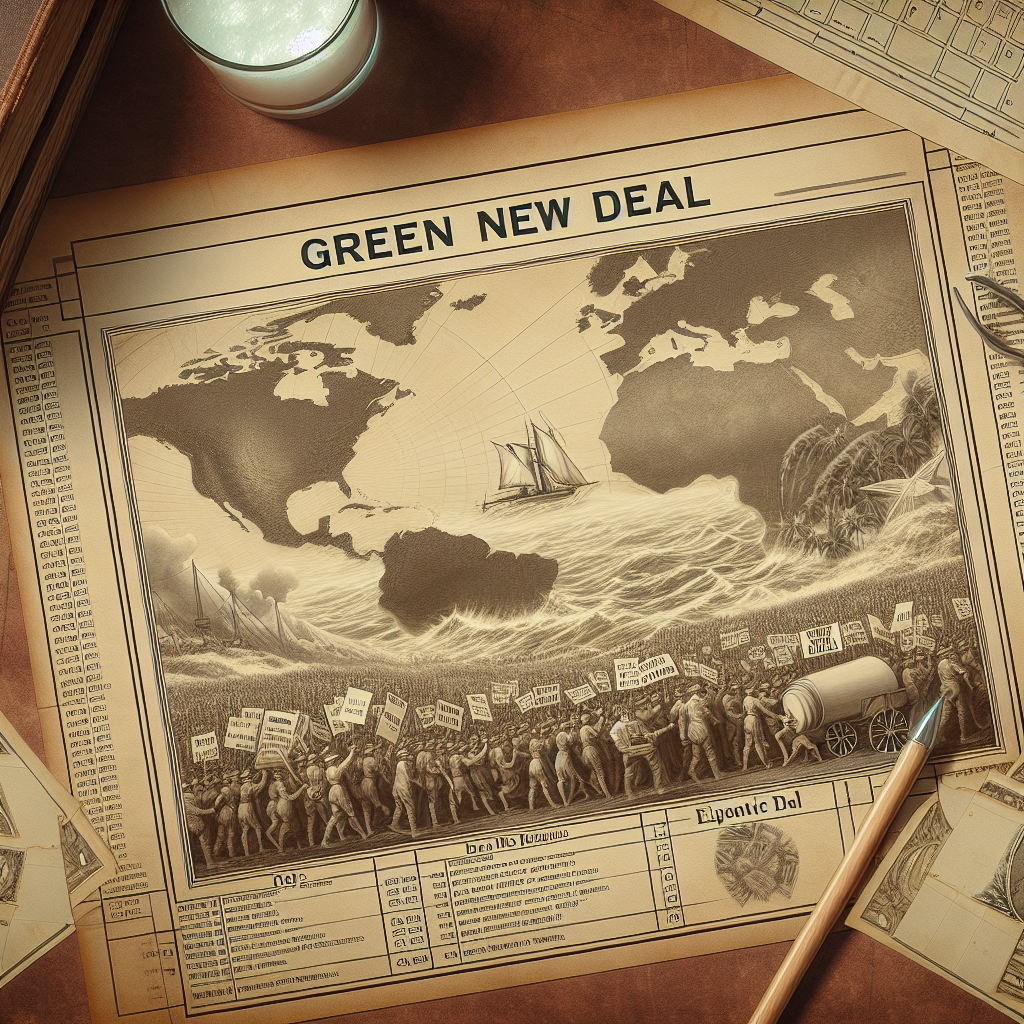Imagine a world where jobs are as plentiful as sunshine and pollution is as rare as a unicorn sighting. That’s the vision behind the Green New Deal. This ambitious plan was introduced in the U.S. Congress in early 2019, primarily spearheaded by Representative Alexandria Ocasio-Cortez and Senator Ed Markey. The Green New Deal aims to address climate change and economic inequality by transitioning the United States to 100% clean and renewable energy within the next decade. It seeks to create millions of ‘green’ jobs while tackling greenhouse gas emissions and reducing the nation’s carbon footprint.
The Green New Deal is inspired by the New Deal of the 1930s, which helped pull America out of the Great Depression through massive infrastructure projects and job creation programs. Fast forward to the 21st century, and the Green New Deal proposes a similar reinvention—a radical shift to revive and rethink the economy with the environment at the forefront. This plan isn't just about installing solar panels and wind turbines; it’s an extensive overhaul of various sectors, including agriculture and manufacturing. By promoting sustainable practices, it aims to ensure future generations inherit a planet that can thrive and sustain.
Not everyone is on board with this sweeping proposal, seeing it as overly ambitious or even unfeasible. Critics argue that the cost of implementing the Green New Deal could run into trillions of dollars, which is a significant concern. They fear that such extensive government intervention might disrupt market economies or lead to job losses in fossil fuel-dependent industries. Many conservatives view it as an overreach, asserting that it could hurt businesses with stringent environmental regulations.
Supporters, on the other hand, highlight the urgent need for change in light of climate science reports. They emphasize how climate change poses a colossal threat, not only to the environment but also to global stability and economic security. Rising sea levels and increasing natural disasters underscore the need for immediate action. The Green New Deal frames climate change as a national emergency, pushing for a dramatic shift towards sustainability.
The policy proposals within the Green New Deal include investing in electric vehicles, updating public transportation systems to be more eco-friendly, and retrofitting buildings for greater energy efficiency. It still centers on reducing carbon emissions, transitioning fossil fuel-dependent infrastructures to sustainable energy, and promoting policies to encourage reduced consumption and waste.
Some argue that the potential upside of the Green New Deal far outweighs the initial costs. Historical precedence shows that governmental intervention during crises can provide long-term benefits. The New Deal combined short-term relief with long-term structural reform, providing a safety net as well as jobs and security. Similarly, supporters of the Green New Deal hope that the push for renewable energy will spur technological innovation and create economic opportunities.
Young people, particularly from Gen Z, tend to be more supportive of initiatives like the Green New Deal. Growing up with heightened awareness of environmental issues and seeing firsthand the impacts of climate change, many see it as not just a policy, but a necessity. Social media campaigns and movements led by young activists have kept climate change at the forefront of public discourse, emphasizing the urgency and youthful energy driving this green revolution.
Yet, awareness doesn’t automatically translate into legislative success. Opponents in Congress have effectively stalled progress on the Green New Deal. However, parts of its agenda have inspired newer policies and international movements. The European Union, for example, has set forth its own ‘European Green Deal,’ with similar aims.
The conversation surrounding the Green New Deal represents more than political maneuvering. It reflects a global shift in consciousness about the environment and economy. Discussions about the Green New Deal have prompted deeper analysis of how lifestyle changes and consumer choices impact the planet. There's an emerging acceptance that a collective effort is needed to address these problems before they become unmanageable.
While the Green New Deal stands as a polarizing proposal, it plays a crucial role in stirring debate and policymaking. Transformative measures like these often challenge existing paradigms, forcing societies to reevaluate their priorities and methodologies. Whether or not it comes to fruition, the dialogue instigated by the Green New Deal continues to influence and galvanize action for climate awareness and change across the globe.

